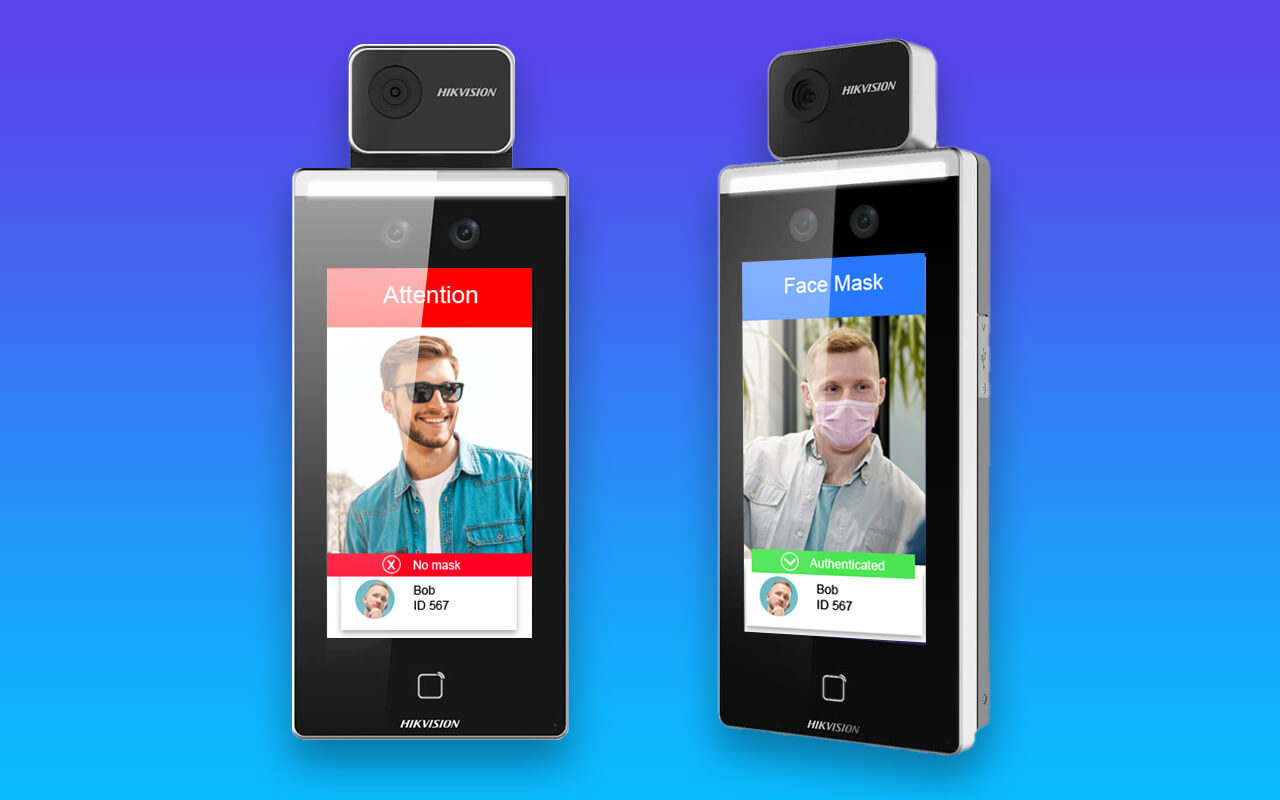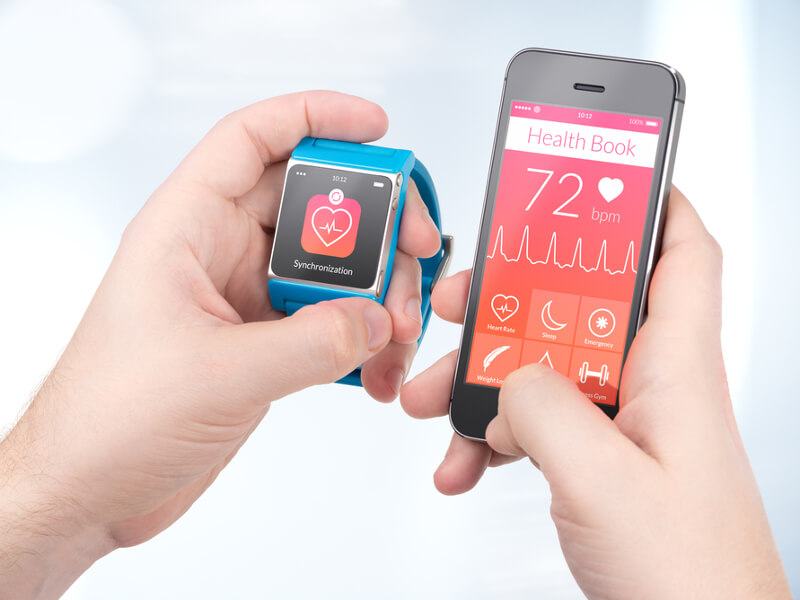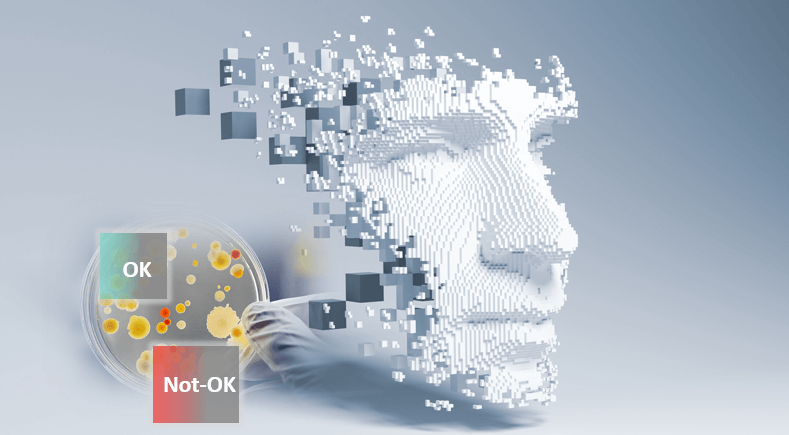The impact of COVID-19 on our society and economy is unprecedented.
In practically all countries manufacturing, shipping, and distribution are heavily affected, many current projects are paused, and new product initiatives are no longer considered. The pandemic has forced enterprises to reconsider their work practices and adjust them to the current situation with COVID-19.
However, some companies reap the benefits of IoT applications in this turmoil. If you want to learn more about this topic, please listen to this short podcast:
General IoT Solutions for COVID: Thermal Cameras
Thermal cameras are a fairly stable solution that has long been used for a variety of purposes, such as assessing heat loss in homes in security applications. Non-contact thermometers have long been used in medicine to quickly and accurately determine the temperature of, for example, infants. Nowadays, even drones are equipped with thermal cameras and non-contact thermometers are used in every store and shopping mall.
But in the case of Covid, this technology also had a new application that was not popular and developed before the epidemic, namely temperature control at the entrance to a building or outside places where people congregate. Before Covid, a person who didn’t know he/she was sick could come into the office and work for a couple of days and spread a less critical virus. This was also a problem because such an employee could infect several people in the department, and instead of one, 30% of the department would go on sick leave. And with the spread of Covid, monitoring and identifying sick employees became a necessity, as a person may not realize they have a slight fever, come to work, and infect colleagues. To prevent this, at the beginning of the spread of Covid massively began to use non-contact thermometers, and over time, at the entrances to the offices began to install equipment for automatic temperature control. In offices, thermal cameras have almost completely superseded non-contact thermometers, and the same trend can be seen in malls.
The fact that thermal cameras are convenient to implement in access control systems and do not require a special employee who would check the temperature at all entrances and who is in constant contact with both healthy and people with a hidden form of covid, for example.
The accuracy of such cameras is very high, about 0.5 degrees, and the working distance of the average solution is up to 3m.

Thermal Cameras + Masks Detection
The logical development of thermal cameras was their introduction into access control systems, as well as mask detection. Such systems are more efficient. The use of complete products, which in addition to temperature control, can recognize the employee and the mask worn, removes the need to contact with the person checking and minimizes the contact with the same surface of the flow of people (e.g., when using RFID), which also reduces the spread of the virus.
Today the technology combination offers not just an infrared camera but a ready-made product for the mass market that integrates into access control systems, controls the pass system, detects people with fever, and can control masks. And this solution, thanks to existing technology, appeared on the market not for years but just a couple of months after the market needed it.
This approach intersects with the ideology of our company. It is faster and cheaper for the client to develop a solution on the existing fragments if it does not require development from scratch.
IoT for Social Distance Monitoring
Keeping distance has become a common requirement in 2020. The problem is that without a good definition of the actual distance and instant information to offenders, it’s hard for people to keep their distance.
IoT offers tags that automatically find each other within range, as well as beep if people are too close to each other. Such a solution can help in factories or construction sites, where people have to focus on work, and the distraction of keeping a social distance can be dangerous. These tags do not require recharging, last over a year on battery power, and are easily replaceable. To track distance in queues, you can use cameras and computer vision.
Social distance has also affected offices. People have to keep their distance in their workplaces at their computers, in their meeting rooms. In kitchens. IoT has a solution that can track occupied seats in real time, monitor office occupancy, and limit access to places where employees should not sit, even if they change. In addition, a similar solution can be implemented in public transport. In this case, the driver would always know the number of passengers on the bus, and passengers would be required to keep their distance.
IoT for Covid in Various Industries
With every industry affected by COVID-19, the amount of potentially effective applications designed for specific business areas is rising, with IoT leading the tech race. The main business segments that can reap the most benefits from IoT systems now are Healthcare, Agriculture, and Retail.
IoT Trackers + Telehealth Consultation
Telehealth services primarily refer to remote patient consultations. In times of self-isolation, when hospitals are full, and healthcare professionals are scarce, telehealth consultations powered by IoT technology allow doctors to consult and help patients remotely. Due to telehealth applications, during the coronavirus outbreak, patients with chronic diseases do not have to visit healthcare institutions, putting themselves and others at risk, as they can easily get the needed consultation on a video call. In this case, IoT connects the patient with a device equipped with IoT sensors that remotely monitors the patient’s health state and sends the information obtained to the doctor on the other side.

Softengi has developed a telemedicine app that allows you to contact any doctor anywhere. The app is a kind of Uber for medical services. In essence, it is a database of medical specialists, which uses numerous filters to allow the patient to find the needed specialist easily and to receive a consultation through a convenient mobile application.
Digital Diagnostics
Another telehealth service is digital diagnostics. Embedded IoT systems are wearable devices providing their users with a self-monitoring tool. The idea behind this is that myriad IoT sensors in a wearable device easily estimate the patient’s health parameters, promptly providing users with information about their general health state. Such use of IoT devices in times of coronavirus speeds up the diagnosis and treatment of diseases, especially benefiting patients and their healthcare providers.
For example, a Health Tech Company, Kinsa, has developed smart thermometers that aggregate consumers’ temperature and symptoms data. This real-time information allows Kinsa to track outbreaks of COVID-19 in the U.S. to stream the allocation of health resources.
“Our mission is to curb the spread of infectious illness through early detection. A thermometer is a means to an end,” says Kinsa founder and CEO Inder Singh. “If you want to know where disease is spreading, you have to know the symptoms. The best way was to piggyback off a tool [people] already had.”
Remote Monitoring
With the ability of IoT technology to virtually connect doctors with their patients, IoT-driven systems can easily track their users’ states and fully automate patient-care workflow by the IoT device capturing and monitoring data and sending the output to healthcare specialists. With IoT systems, healthcare providers can access real-time patient data as frequently as necessary to get better visibility into the patient’s health condition.
As an example, Shanghai Public Health Clinical Center (SPHCC) uses a temperature sensor system to monitor COVID-19 patients to reduce the risk of caregivers’ exposure to the coronavirus.
IoT in Agriculture & Farming
Another industry that can reap significant benefits from IoT tech is Agriculture. The agriculture industry is dealing with its set of problems starting from uncertainty in supply and demand to labor shortages and personal health. To get through the current pandemic crisis without heavy losses, agriculture companies have started accelerating their tech initiatives, paying much attention to IoT-based solutions.
By applying advanced IoT analytics and IoT platforms, farming can reach a new level. For instance, sensors placed in fields allow farmers to get detailed maps of topography and resources in the area, as well as such variables as the acidity and temperature of the soil. As a result, with IoT, agriculture companies can enhance their veterinary diagnostics, crop protection, and general farming processes.
Softengi has developed a set of advanced solutions for agriculture, starting from machinery tracking to remote crop analysis. As a result, this set of tech solutions helps companies to make up precision farming or precision agriculture.
Retail
The retail sector is one of many industries that has been heavily hit by COVID-19. Due to the isolation restrictions, stores closed their doors to customers, employees started to work remotely, and suppliers shut down their deliveries.
Smart Retail
The most obvious benefits of IoT are in the retail industry. IoT sensors and obtained data allow retailers to monitor customer satisfaction, control food safety, track assets, and provide supply chain insights. In the time of the coronavirus pandemic, when retail companies have to cut costs and remain competitive, the Internet of Things is becoming a key instrument.
Read more about IoT applications in Retail.
Conclusion
The outbreak of COVID-19 is having a significant impact on most industries. To get through and stay alive, most companies are forced to reconsider their business models, paying more attention to available innovative tech solutions. With its ability to connect people, be they employees, customers, or vendors, the Internet of Things provides new opportunities in various spheres, assisting various enterprises to operate more efficiently during isolation. Softengi, with its vast experience with Internet of Things applications, is ready to help you keep functioning and succeed in this time of uncertainty, reaping the benefits of IoT software.





